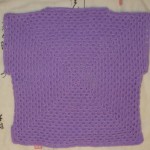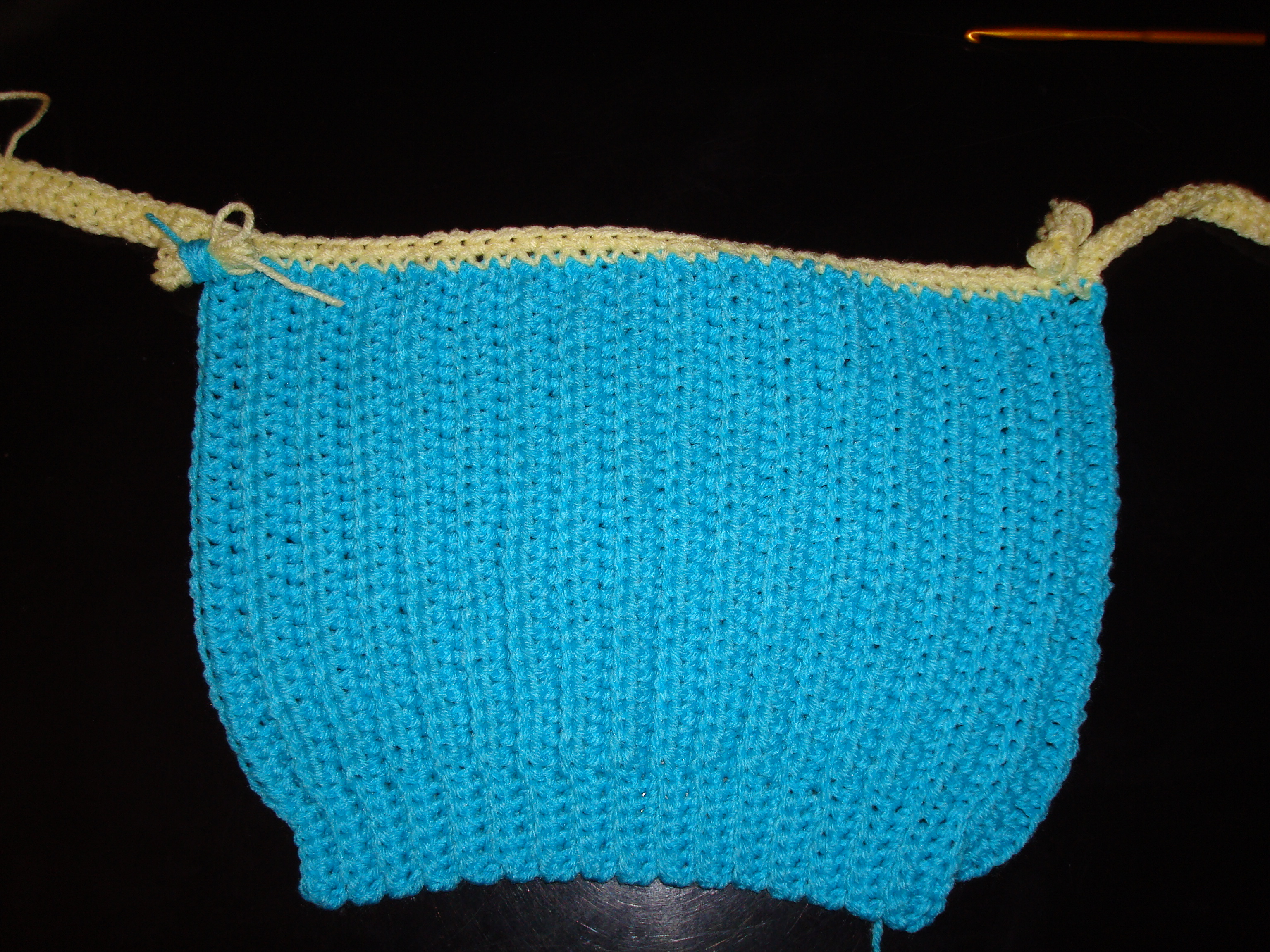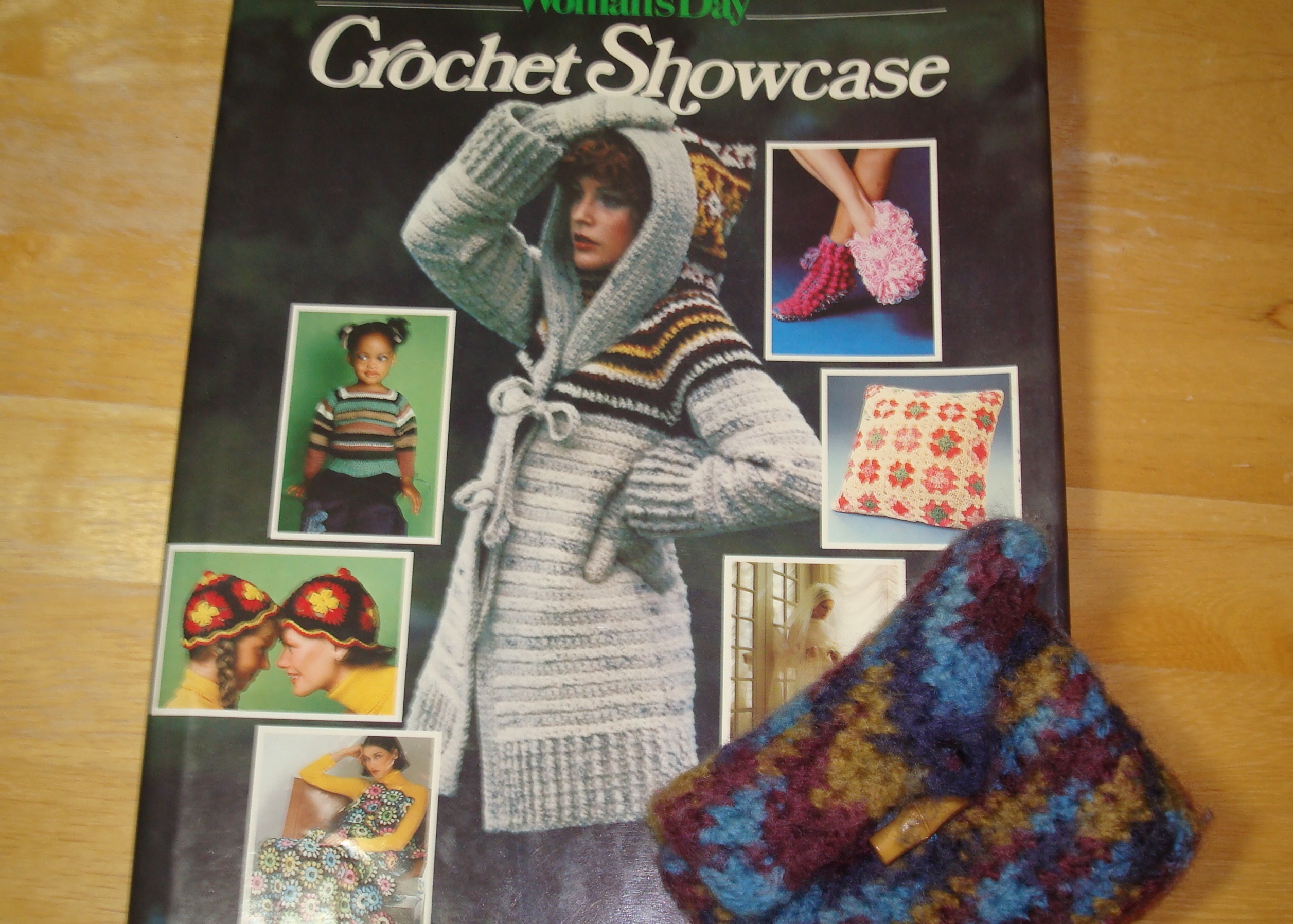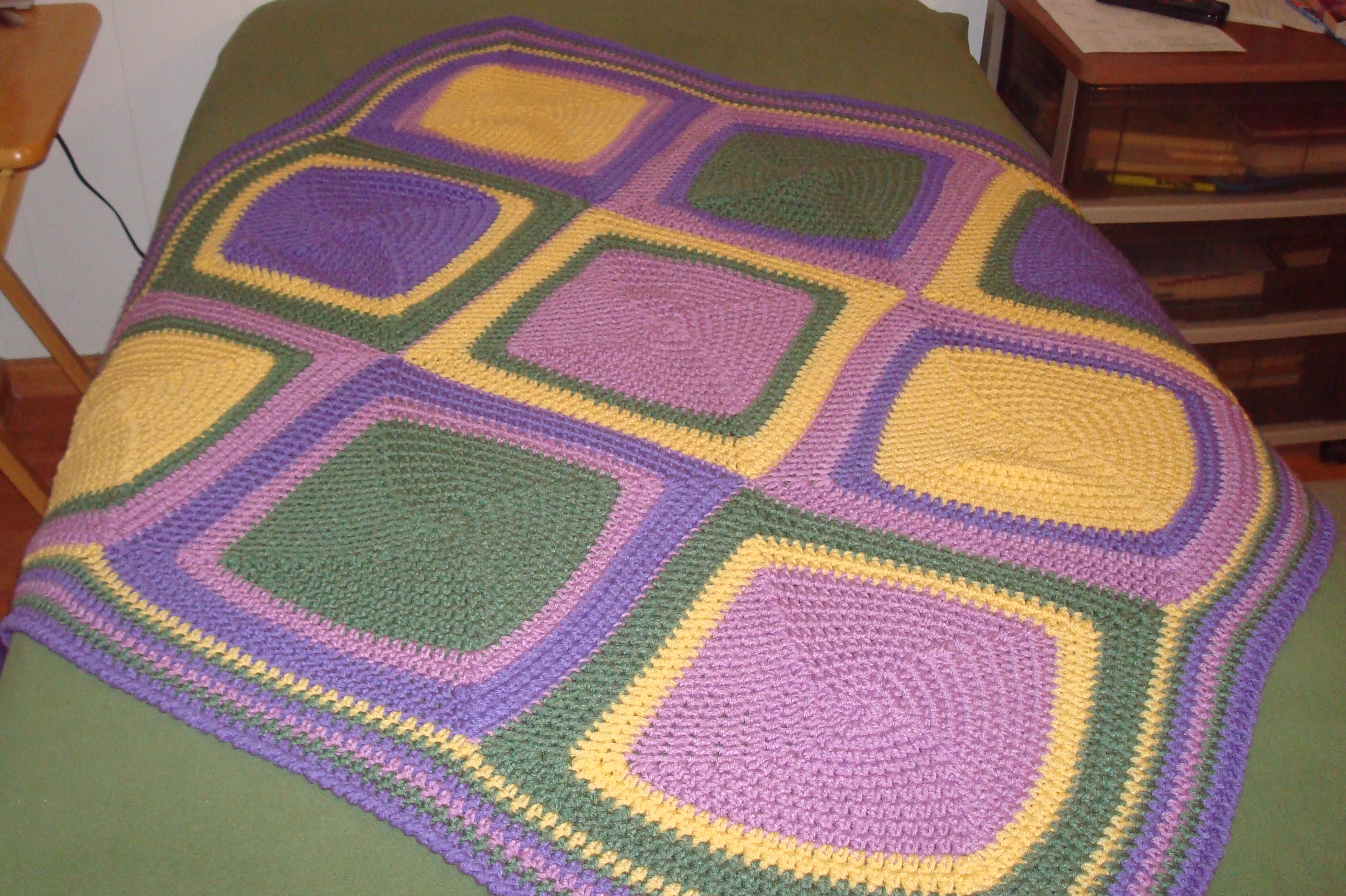Eco-Friendly Crochet – An Idea Whose Time Has Come
After watching a documentary about the demise of the electric car and the movie, Thrive , produced by Proctor and Gamble heir, Foster Gamble, I’ve been trying to figure out what contributions I can make to ensure this planet is still here 20 years from now.
Thinking about global warming and pollution in the past used to overwhelm me. The problems seem insurmountable, and I didn’t know what one individual’s efforts could do to steer the planet toward a healthy, sustainable future.
Then I remembered the environmental movement’s slogan, “Think globally, act locally.” And I realized that if as many people as possible took just a few, small eco-friendly actions every day, then perhaps we could begin to solve the environmental problems plaguing the planet before it’s too late. Maybe that’s a bit of a “Pollyana-ish” take on the situation, but I figured it won’t hurt to try.
And it doesn’t have to be difficult either. Since I love to crochet, I thought, why not focus that love on projects that cut back on my use of plastics and other “disposable” products that eventually end up in a landfill somewhere, taking a thousand years or more to decompose?
Thanks to the Internet and the whole host of free crochet patterns available online, it’s not difficult at all to find “green” crochet projects that are easy and fun to make.
So, I’m hoping this is the first in a series of blog posts that highlight free crochet patterns and reasonably-priced yarns you can use to crochet eco-friendly, everyday items for use at home and in your daily activities.
The Reversible Swiffer Sock
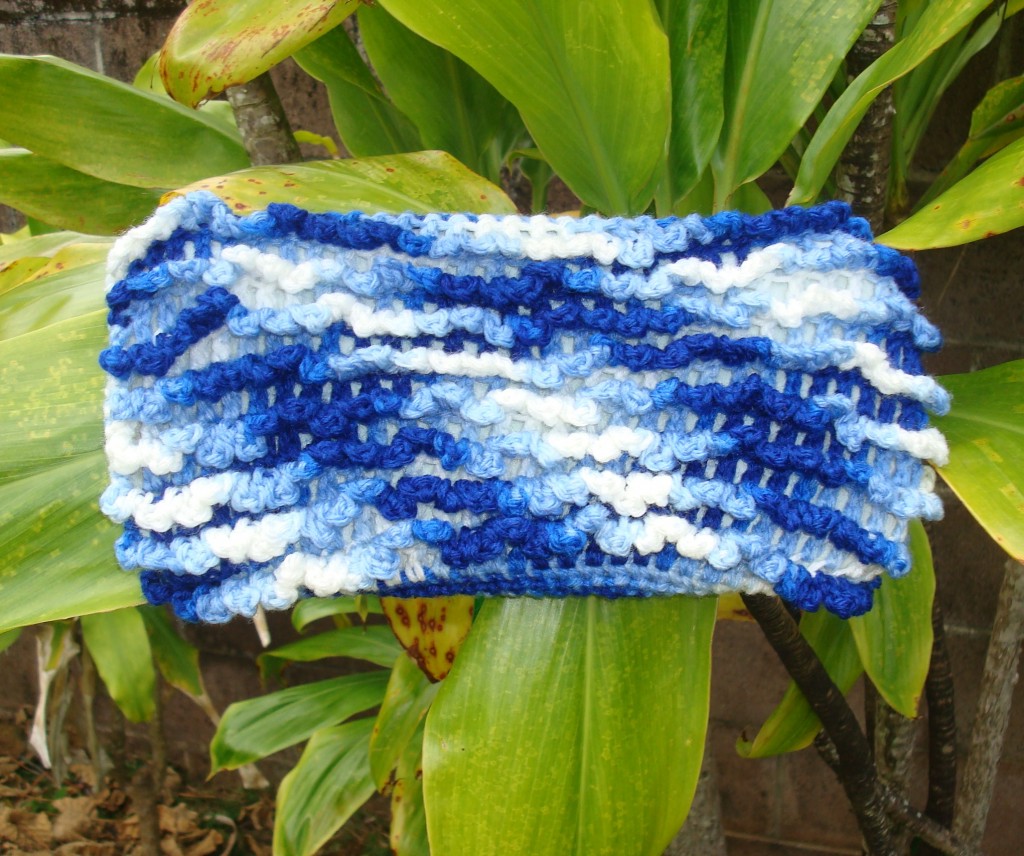
I’ve seen many versions of this pattern on the Internet, but this is my favorite one. This sock is designed for use on those Swiffer and other brand-name sweepers onto which you attach a disposable dry cloth for dusting. The sock eliminates the need for purchasing refills, not only saving you money, but helping to reduce the gargantuan amount of these non-biodegradable products that end up in landfills each year – all in the name of convenience.
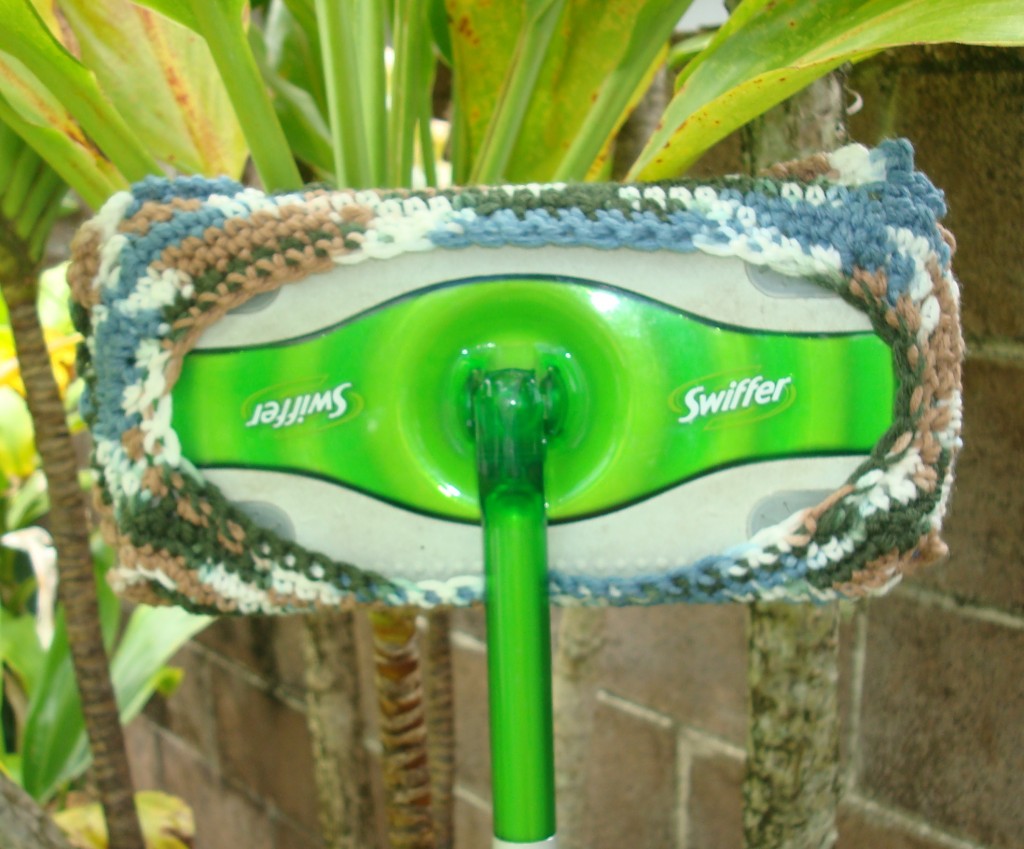
This particular sock is reversible – use the “nubby” side for serious dusting; turn it inside out and use the smooth side for light mopping.
The Reversible Swiffer Sock , designed by Linda Permann , is extremely easy to make. The pattern uses the chain, single, and double crochet stitches. Yes, there is some crocheting in the round and decreasing, but don’t let these slightly advanced techniques intimidate you. Just be sure to view all of the excellent photos that accompany the written instructions, and you should have few if any problems.
I was able to whip one up in two evening sessions in front of the TV. I made two so that I always have a clean one while the other one is being laundered.
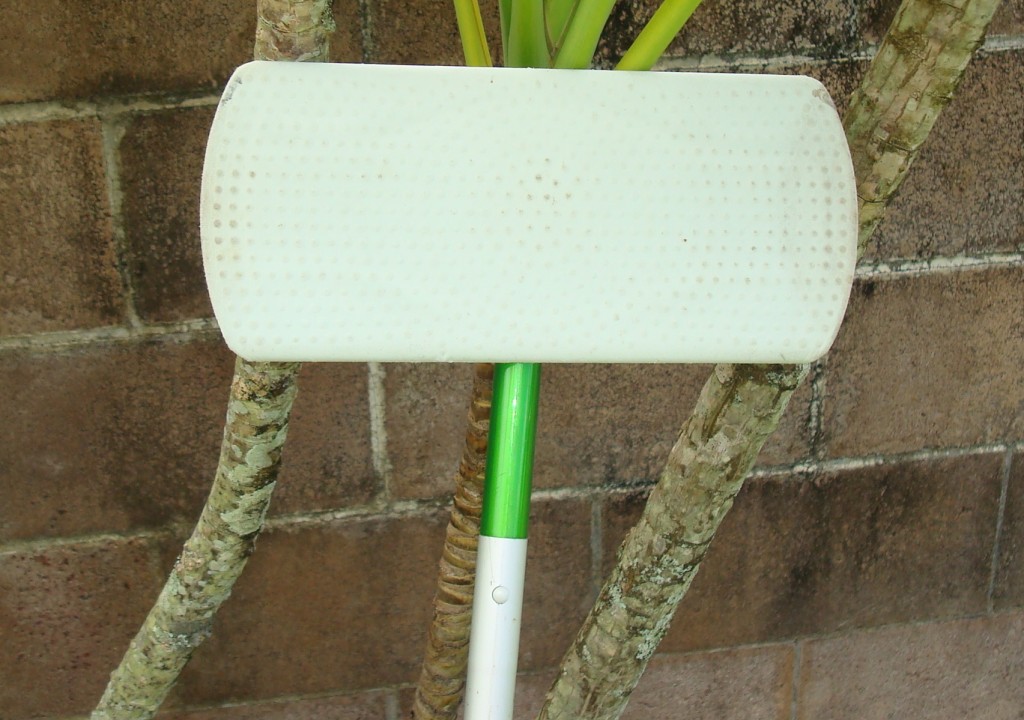
Based on the size of your sweeper (the newer Swiffer models, for example, are a bit bigger than the older ones), you may have to make some adjustments to the pattern. I added two pattern rows to my socks and did an extra round of single crochet after the last pattern round on the blue variegated sock to make it fit my mop more snugly. These are simple adjustments even a beginner can make.
The pattern calls for worsted-weight acrylic yarn and an H/8 (5 mm) hook. My new-found, eco-friendly sensibilities are starting to have some reservations about acrylic yarn, however, since it is petroleum-based (hope to blog about it at some point in the future). But for now, I’ll continue to deplete the humongous amount that’s still in my stash.

Actually, the yarn I used for these two socks were gifts from fellow crocheters. I didn’t think I’d be able to do anything with it, but the approximately 3.5-ounce skeins of each colorway I received were more than adequate to complete one sock.
The original pattern calls for two colors, which is fine. But I like the fact that, with variegated yarn, I didn’t have to change colors, which would have resulted in more ends to weave in. The variegated yarn creates a very nice effect, but I only have to weave in the beginning and ending tails.
Eco-Friendly Crochet: What’s Next?
My next blog post in this series will be about another easy-to-crochet, green project that calls for a cotton/nylon blend. But I substituted hemp, an exciting, not-so-new, eco-friendly fiber that I’m eager to tell you about.
Until next time, remember to think globally, and act locally!

